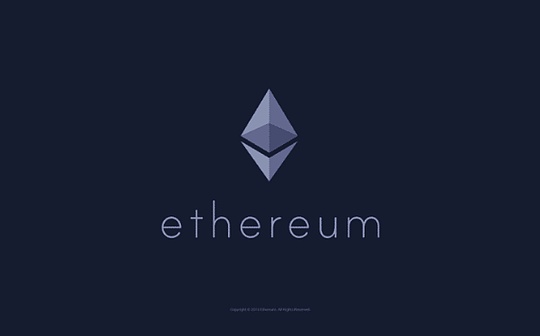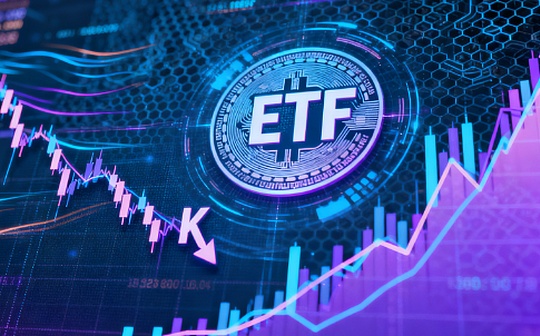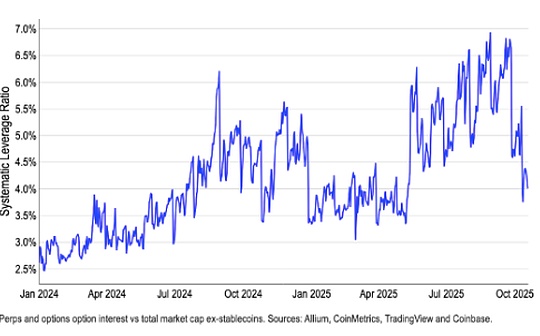
Author: @Web3Mario (https://x.com/web3_mario)
summary:
Last Sunday, I read an exclusive interview between Bankless and Multicoin, “Why is ETH Down so bad?” and found it very exciting and profound. I suggest that everyone must read it.Ryan fully demonstrated the difference between Web3 pragmatism and fundamentalism in the interview, but I have discussed this in detail in previous articles.In addition, this view also triggered a lot of touch and thinking. Indeed, in recent times, Ethereum has begun to suffer a certain degree of FUD. The direct reason is that the ETH ETF has not been able to be triggered as expected.Similar market conditions when BTC ETFs were passed have triggered some people to rethink the vision and development direction of Ethereum.I also have some thoughts about these issues and hope to share them with you.In general, I recognize Ethereum as a social experiment, hoping to create a decentralized, authoritative and even trusted “Cyber Immigration Country” and its expansion direction of L2 based on Rollup.There are two real problems facing Ethereum. One is that Restaking’s competitive relationship for the L2 expansion solution, which dilutes the resources for ecological development and reduces the value capture ability of ETH.Second, the key opinion leaders of the Ethereum Department are becoming aristocratic, and because they cherish their feathers, they lack enthusiasm for ecological construction.
Evaluating the success or failure of Ethereum from the perspective of market value alone is one-sided
First of all, I hope to talk about the difference between Ethereum and Solana in terms of values, and comment on why it is one-sided to evaluate Ethereum from the perspective of market value.I don’t know how many friends know the birth background of Ethereum and Solana. Let’s first make a simple review here.In fact, Ethereum did not have the fundamentalism that it is today at the beginning. In 2013, Vitalik, one of the core contributors to the Bitcoin ecosystem, released the Ethereum white paper, which also marked the birth of Ethereum.The main narrative of the industry at that time was “Blockchain 2.0”. I wonder how many friends remember this concept. In fact, it specifically refers to establishing a programmable execution environment based on the decentralized features provided by blockchain, and expanding it.Potential application scenarios.In addition to Vitalik, the core Ethereum team at that time had 5 other core members:
-
Mihai Alisie: He co-founded Bitcoin Magazine with Vitalik.
-
Anthony Di Iorio: Early Bitcoin investors and advocates assisting Ethereum’s early promotion and financing.
-
Charles Hoskinson: One of the early core developers, and later founded Cardano.
-
Gavin Wood: The author of Ethereum Yellow Book (Technical White Paper), designed the Ethereum programming language Solidity, and later founded Polkadot.
-
Joseph Lubin: He provided important financial support to Ethereum and later founded ConsenSys, a well-known enterprise in the Ethereum ecosystem.
Ethereum conducted public financing through ICO in mid-2014.About 31,000 bitcoins were raised in the financing campaign in 42 days, which was worth about $18 million at the time.This was one of the largest crowdfunding at the time, when Ethereum’s core vision was to create a decentralized global computer platform that could run smart contracts and decentralized applications (DApps) of any complexity.This platform is designed to provide developers with a universal, borderless programming environment that is not controlled by a single entity or government.However, in the subsequent development, the core team had differences in values on how to build Ethereum:
-
Differences in governance models: The team has different opinions on the governance model of Ethereum.Vitalik Buterin prefers a decentralized governance structure, while members such as Charles Hoskinson (later founded Cardano) advocate a more commercial and centralized governance model.They hope that Ethereum can introduce more enterprise management experience and business models, rather than relying solely on the self-governance of the open source community.
-
Differences in technical directions: Team members also have differences in the direction of technological development.For example, in the process of developing Ethereum, Gavin Wood proposed his own ideas on technical architecture and programming languages, and wrote the Yellow Book of Ethereum (Technical White Paper).But over time, Gavin developed a different view on the direction of Ethereum’s technological development, and eventually he chose to leave Ethereum and founded Polkadot, a blockchain project that focuses more on interoperability and on-chain governance.
-
Differences in commercialization paths: Team members also have differences on how to commercialize Ethereum.Some members believe that Ethereum should focus more on enterprise-level applications and partnerships, while others insist that Ethereum should maintain an open, borderless and decentralized developer platform.
After a political struggle, the cryptocurrency fundamentalist side represented by Vitalik won the victory, while the other pragmatist side that pays more attention to leveraging the technological characteristics of blockchain to promote the integration and commercialization of traditional industries left Ethereum.Build their own products separately.The differences at that time were actually the differences between Ethereum and Solana in terms of values reflected in this interview, but the protagonist of the story was replaced by Solana, who was better combined with traditional finance.
Since then, Vitalik has become an actual guide for the Ethereum industry.The so-called fundamentalism refers to the creation of a censorship-resistant “cyber immigration society” by providing a decentralized online execution environment as a distributed “cyber parliament”, which allows users to build on EthereumVarious DAPPs in the ecological meet all online life needs and thus get rid of their dependence on authoritative organizations, including oligopoly technology companies and even sovereign states.
Under such a vision, we can see that Vitalik’s subsequent efforts mainly focus on two aspects:
-
Application: Think about and encourage more non-financialized usage scenarios, so that this decentralized system can accumulate more dimensions of user data, and thus promote the creation of richer high-stickiness products, thereby improving the penetration of Ethereum into the online life of ordinary people.The purpose of rate.It is not difficult to find some well-known topics among them, such as DAO with distributed collaboration as the goal, NFT with cultural value, SBT with more diverse non-financial user data, and so-called social recognition in the real worldKnow the prediction market of tools, etc.
-
Technical aspects: On the premise of ensuring decentralization and trustlessness, the execution efficiency of the network should be improved as much as possible through cryptography and other means.This is the expansion direction from Sharding to Rollup-L2 that Vitalik advocates in terms of technology.By offloading the execution process of “recomputation” into L2 or even L3, L1 is only responsible for handling important consensus tasks, thereby reducing user usage costs and improving execution efficiency.
For projects such as Solana that focus more on expanding traditional financial business with the practicality of blockchain, it is simple and focused on a lot, that is, as a listed company with profit-oriented purpose, how to improve its price-to-earnings ratio.As for whether to insist on values such as trust, it depends on the potential profit behind this narrative.Therefore, Solana will not have too many burdens and resistance in promoting the integration with CeFi products, and will have a more open and inclusive attitude.With the entry of Wall Street capital, traditional finance’s influence on the crypto world has increased dramatically, and Solana is one of the core beneficiaries of this trend, or it is not an exaggeration to say that Solana is the preacher behind it.As a profitable company, it naturally needs to hold a customer-oriented thinking, which is why Solana pays more attention to user experience.
After clarifying these lines, let’s think about an interesting question: whether Ethereum and Solana are competitors.In some ways, the answer is yes, specifically referring to the provision of unregulated, all-weather cryptocurrency-based financial services.At this point, Ethereum’s security and system robustness are better than Solana, at least there will be no frequent downtime, but user experience has indeed become a problem at this stage. The numerous L2 side chains allow many new users to touch itHe is not mindful, and at the same time, he faces considerable financial risks and psychological pressure when using the fund bridge.
However, in the dimension of cultural attributes as the “cyber immigration society”, Ethereum is unique.For such a non-profit, public welfare, and humanistic public goods, it seems a bit one-sided to evaluate its value from the perspective of market value.This process can be understood as a subculture community enriching its governance functions through some technical means, thus forming a sovereign state based on the existence of the Internet.The core of the entire construction process is to firm up a universal value, which is to ensure that decentralization brings anti-censorship characteristics.This is a concept, a belief.This is why Ryan said that the Ethereum community has “human advantage”. It is precisely because as the cultural product with the highest added value in human history, it can fully adjust people’s enthusiasm. It is not just from a utilitarian perspective that you can get this coldThe success of the initiation is consistent with the process of any political revolution.Just imagine if you only evaluate the United States at the beginning of independence based on output value, it would be ridiculous.It obviously takes much longer to establish a country than a company and it is much more difficult to encounter, but the profit after achieving it cannot be measured by the company.
L2 and L1 are not competitive but master-slave relationships, and will not dilute Ethereum’s value capture ability, because the legitimacy of L2 comes from L1
The second point I hope to refute is that Ryan’s core point of questioning Ethereum is that he believes that L2 is an execution outsourcing strategy that will dilute the value capture ability of Ethereum L1. At the same time, when L2 develops to a certain extent, it willA competitive relationship with L1 and leads to a breakdown of cooperation.
Regarding this point, on the contrary, I think the current development path of Ethereum based on Roll-Up L2 is the perfect choice. As a low-cost and high-execution technical solution, L2 can not only effectively expand the potential application scenarios of the Ethereum ecosystem, but alsoTo a certain extent, this is also a relatively environmentally friendly technical solution to reduce data redundancy in the network without sacrificing the degree of decentralization.It can also help Ethereum actively explore some boundary scenarios in the environment of reducing single-point risks, such as cooperation with CeFi or innovation in anonymous projects, which can also operate with the help of L2, which also has the effect of risk isolation.
First of all, the description of L2 is about the outsourcing, which I don’t think is very appropriate.In traditional business training, we have easily understood the pros and cons of executing outsourcing. By divesting a part of the low-profit-margin business from its main business and allowing third-party companies to take over through outsourcing, the company can focus more onHigh-value-added business and reduce corporate management costs.However, the disadvantage is that iterative capabilities of related technologies will be lost, and the outsourcing cost will be raised in an uncontrollable manner.TSMC can well illustrate this point for the relative development history of the US-Japan semiconductor industry.
However, L2 cannot be understood so simply. In fact, I think it is more reasonable to use L2 as the “colonial system” of Ethereum L1.The biggest difference between the two lies in the content of the contractual relationship between the two parties and the binding force of the contract, that is, the source of legitimacy behind it.First of all, we know that L2 does not undertake the consensus task of trading, and it relies on L1 to give finality through technical means such as “optimistic plan” or “ZK plan”.L2 is more of a role as an executor or agent for L1 in certain subdivisions.This is a subordinate relationship similar to the colonial system.
You can understand it as the British Indian system established by the British Empire in the Indian subcontinent, which was responsible for handling taxation and management in the colonial areas by appointing bureaucratic systems such as governors and supporting local Tu people as full agents.We know that there are two ways for the suzerain states to obtain profits from the colonies. The first is to control the international trade of the colonies through exclusive trade laws and affect their economic structure. For example, to promote raw material industries such as tobacco in North American colonies, and only allow the colonies and suzerain states to be exclusively allowed to only the colonies and suzerain states.trade between them.In this way, profits are obtained through added value differences with the help of industrial capabilities.The second is relatively simple, which is to establish a tax system in the colonies, directly tax and transfer parts to the sovereign state, which usually relies on a strong sovereign state garrison to maintain the stability of rule.
L2 acts as the value capture agent of Ethereum in various fields. There are two ways for Ethereum to benefit from this system. One is that in order to obtain security, L2 needs to make final confirmation on L1, and this process requiresAs the payment subject, ETH creates a use scenario for ETH, which is similar to a “final” tax levied by L1 from L2, or it can also be understood as a reward for L1 to bring security guarantees to L2.Secondly, due to the master-slave relationship between the two parties, ETH is more likely to be used as a value storage target by users in L2 than other assets, thereby achieving a seigniorage effect.Just imagine in the lending agreement in L2, you will find that the highest collateral value must be ETH.
The reason why this master-slave relationship is not easily broken is that L2 will not form a competitive relationship with L1 and thus lead to the breakdown of cooperation lies in the fact that the source of legitimacy of L2 and the finality provided by L1 are like the colonial systemLegality comes from the military support of the suzerain state.Leaving this partnership will make L2 lose its legitimacy, which will lead to a collapse of the overall business logic, because the reason most of your users use you is because of the legitimacy provided by L1.
Ethereum is currently facing two problems: ReStaking’s vampire attack on the L2 development route and the key opinion leaders of the Ethereum system are becoming aristocratic
After discussing the above two arguments, I hope to talk about the real problems encountered in the current development of Ethereum.I think there are two core points:
-
ReStaking’s vampire attack on the L2 development route;
-
The key opinion leaders of the Ethereum system are becoming aristocratic;
In my previous article, I have introduced EigenLayer’s vision and development direction in more detail. I have a high evaluation of EigenLayer, but when I look at this project from the perspective of Ethereum ecology, I find that it is simply a matter of time.The “Vampire Attack” has squeezed out a large number of resources that should have been directed to L2 construction and was diluted to the ReStaking track, but at the same time, ReStaking has fundamentally lost its value capture ability.
How to understand it? I have just talked about how Ethereum gains from L2. You will find that the same logic will not be able to reuse the Restaking track.As another expansion solution, ReStaking and L2 are in principle competitive. However, ReStaking only simply reuses Ethereum’s consensus capabilities, but cannot establish sufficient incentive models to stimulate ReStaking builders to actively explore more usage scenarios.The core reason is that the consensus of L2 operators using L1 is costly, and this cost is a fixed cost and does not affect the degree of L2’s activity.Since ETH is needed as the final payment target, L2 operators need to actively build and explore in order to maintain a balance of revenue and expenditure and strive for higher profits.However, for ReStaking, reusing the consensus of L1 is costless, because they only need to pay a simple bribe for the Staker on L1, which can even be a future expectation. Think about the Point farce.This has also been analyzed in detail in my previous articles.In addition, ReStaking is responsible for assetizing consensus capabilities, that is, you can flexibly choose the cost of purchasing consensus services based on current needs, which allows potential buyers to use Ethereum’s consensus services in a targeted manner, which is for buyers.It’s a good thing, but for Ethereum, it also loses the mandatory nature of L2.
As ReStaking and its derivative tracks attract a lot of capital and resources, the development of L2 has stagnated.This makes the resources in the ecosystem waste in the work of reproducing wheels or square wheels. No one thinks about how to create richer applications and capture more benefits, but is just immersed in the storytelling brought aboutIn the capital game.This is really a mistake.Of course, from the perspective of EigenLayer, the mentality will turn 180 degrees. I still admire the team’s clever capture of the value of the commons!
In addition, there is another problem that concerns me more is that the key opinion leaders of the Ethereum system are becoming aristocratic. You can find a phenomenon that the Ethereum ecosystem lacks the positive ones like Solana, AVAX, and even the Luna ecosystem at that time.Opinion leaders, even if they seem to be FOMO makers, are undoubtedly a good thing for community cohesion, and the confidence of the entrepreneurial team.I do not recognize Ryan’s historical view, but I do admit that the opportunity for historical advancement cannot be separated from the efforts of individual geniuses.However, in the Ethereum ecosystem, it is basically difficult for you to think of other opinion leaders except Vitalik, which is naturally related to the split of the founding team at that time.But it is also related to the lack of liquidity of the ecological class. A large amount of ecological growth benefits are monopolized by early participants. Yes, imagine that after you complete a 31,000 BTC fundraising, with a current market value of more than $2 billion, even ifIt is OK for you to do nothing, not to mention that the wealth you create in Ethereum has long exceeded this number.So for those early participants who should be the most opinion leaders, it is more attractive to start a transformation into a conservative strategy than to expand.In order to avoid risks, they have become more concerned about their feathers, and it is understandable that they are tending and conservative in promoting ecological construction.The simplest thing is that as long as you can guarantee the status of AAVE and then lend the large amount of ETH you hold to leverage demanders, you can earn a lot of solid returns. So why do you need to motivate other new products?
And the reason why it has become the current situation is closely related to Vitalik’s style.For Vitalik, I think he is better at being a religious leader, and he will have very constructive designs on metaphysical issues such as the design of values.But as a manager, he doesn’t seem to be keen on this.This is also why Ethereum’s development efficiency is so slow. An interesting joke. When the Ethereum community first started designing Sharding’s technical solutions, domestic public chains were all divided.This is naturally related to Vitalik’s management style, and you might say that this is due to the problem that has to face in pursuit of decentralization and non-profitness.But I think for this ecosystem, Vitalik has the obligation to actively solve this problem.
But no matter what, I am full of confidence in the development of Ethereum, because I recognize the public welfare and revolutionary vision behind this group of people. It is Ethereum and the group of people behind him that brought me into this industry and established itI have my own industry cognition and even have my current values.Even if I encounter some resistance now, as an older young man, I think it doesn’t seem that bad to pursue some ideals other than money!








